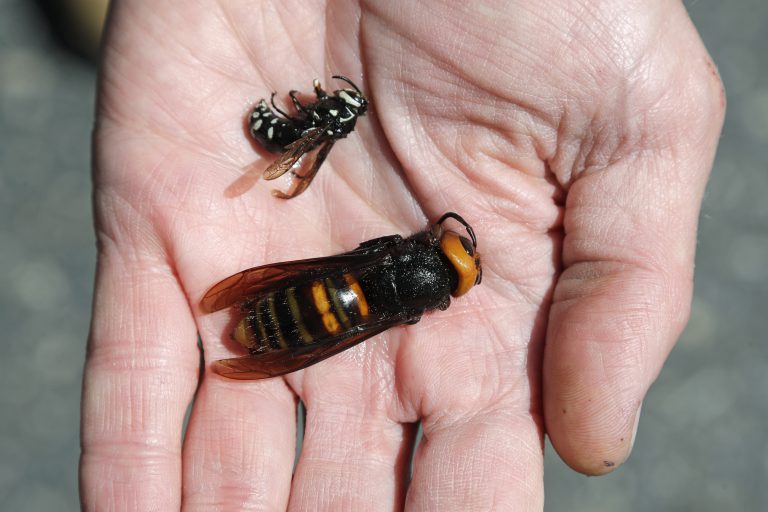URBANA – Giant hornets, which are native to Asia, arrived in Washington state for the first time at the end of last year. They’ve been dubbed “murder hornets” and garnered public attention in recent weeks.
But it’s unlikely the insects will spread outside of Washington to pose any real threat, says Adam Dolezal, assistant professor at the Department of Entomology at University of Illinois.
“I think certainly this is a case of some pretty heavy hyperbole, in terms of this term, ‘murder hornets,’ which I think is the first time it’s ever been used,” Dolezal says. “It’s not the common name of these insects. And certainly they’re scary-looking, but the chances of it making it through the U.S. in the near future are really low, especially here in Illinois.”
The hornets, known as Vespa mandarinia, are the largest hornets in the world and are predators of honey bees. Dolezal says if the hornets do spread, they could pose some risk to honey bees—which are already declining in population globally. But he says pesticides, a shift in land use and reduced bee nutrition pose a far greater threat to bee populations than the hornets.
Dolezal says the hype around the hornets should shed light on some of the bigger problems leading to bee population decline. He also notes that there are other invasive pest problems in the U.S. that are far more harmful than the hornets.
“The chances of us having the hornets at all are pretty minimal. The chance of them impacting most people’s day-to-day lives is pretty minimal,” Dolezal says. “But there are other invasive insect pests that are much more economically damaging, to me are much scarier, but we don’t hear about them nearly as much.”
Some of those invasive pests include the spotted lanternfly and Asian citrus psyllid, both of which are damaging to crops and plants.







